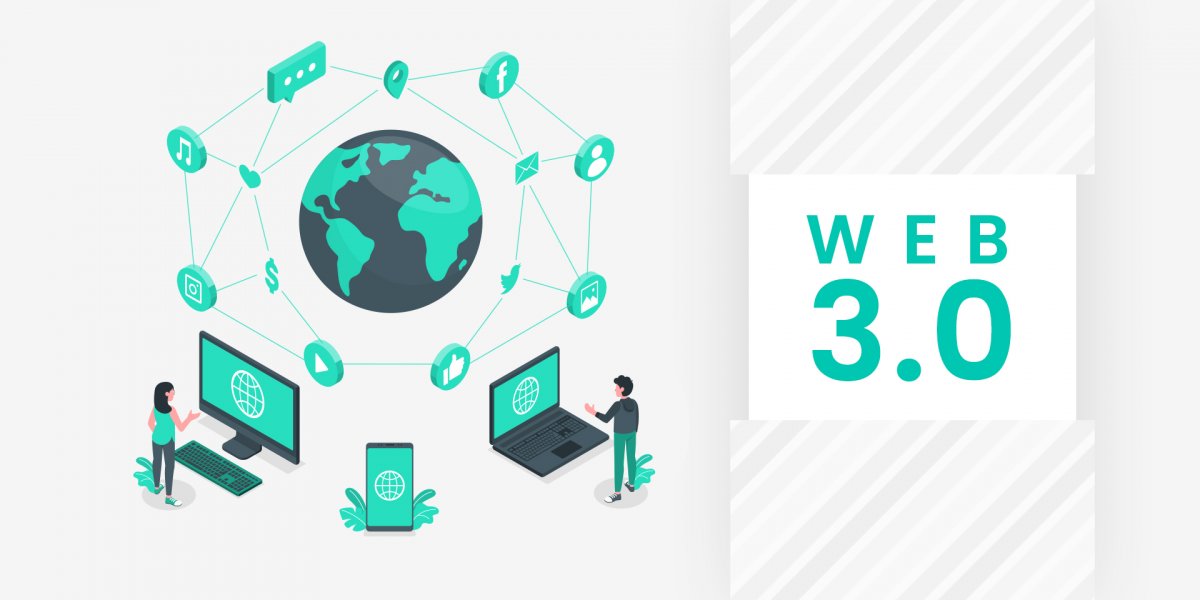The Internet is the network of networks that has connected the entire world together. The existing world of the internet, i.e., Web 2.0, has made our lives easier and more comfortable. Have you ever imagined a type of internet that can interpret and understand what you input via text, voice, or any other media form; a generation of internet that provides personalized, tailored-made content for you?The new stage or phase in the evolution of the World Wide Web is Web 3.0.
The initial stage of Web 3.0 is already here. However, there is still a lot of development left until the real potential of Web 3.0 is realized. But, what does Web 3.0 really mean? How will it have an impact on our lives?
“Web 3.0” definition
Web 3.0 is the upcoming third-generation internet world where decentralised technology will power websites, web apps, and mobile apps to process data and information smartly, just like human beings do, through the latest technologies like big data, decentralised ledger technology (DLT), machine learning, and artificial intelligence.
- Compared to the existing Web 2.0, where data is mainly stored in centralised repositories, Web 3.0 is all going to be about decentralised interconnections.
- In the world of Web 3.0, both users and machines will be able to interact and interpret data.
- For this to happen, contextual and conceptual understanding of information is key.
- Decentralization will be at the heart of Web 3.0.
- In Web 3.0, the focus will be on empowering individual users through privacy, trust, and security.
- The web apps that we see as a part of Web 2.0 will be replaced by smart, interactive apps in Web 3.0.
- Semantic websites and artificial intelligence will form the core components of Web 3.0.
- Web 3.0, the decentralised version of the internet, will be powered by blockchain technology.
- In Web 3.0, users will be complete stakeholders in the apps and platforms.
Web 3.0 features
In order to understand the third generation of the internet better, we need to have a close look at the Web 3.0 features.
Decentralization
- The core feature of Web 3.0 will be data decentralization.
- In the previous web versions, computers searched for information using HTTPS from a single location and a single server.
- With Web 3.0, information can be accessed anywhere in the world.
- Decentralized data networks store data.
- Users will maintain complete ownership over the data and digital assets.
- With the power of decentralization, users can login securely on the internet without being tracked.
Ubiquity
- The speed of the internet is becoming faster. Hence, interconnected devices and computers are and will be used in the future as well.
- From Bluetooth devices to smart watches, everything is interconnected to the internet.
- Web 2.0 is already ubiquitous. However, Web 3.0 will take ubiquity to a completely new level with the power of IoT devices.
Semantic Web
- In the evolution of the world wide web, the semantic web improves the accessibility and functionality of websites.
- When users search for specific data, the semantic web allows accurate and effective content search much better than ever before.
- Implementing semantics in the web allows machines to decode the meaning of data and analyze it to offer an improved experience to internet users using the power of improved data connectivity.
Blockchain
- The use of blockchain is one of the most important Web 3.0 features.
- Using blockchain technology, user data is encrypted and protected from any potential threats and vulnerabilities.
- Data encryption in Web 3.0 prevents large organizations from using and/or controlling user data for their own motives.
3D graphics
- The use of three-dimensional design and images in Web 3.0 will make websites and apps more interactive, immersive, and engaging for users.
- 3D graphics and imagery are already being used in gaming, animation, ecommerce, etc.
Connectivity
- In Web 3.0, all the data will be interlinked with each other such that machines can understand it just like humans do.
- A higher level of connectivity in the case of Web 3.0 will take user experience into a completely new interconnected world.
Examples of Web 3.0
The Web 3.0 examples include:
- Siri from Apple
- Wolfram Alpha
- Experts
- Storj
- Brave
- EOS
- Essentia.one
Web 3.0 is all set to transform our lives.
- The existing Web 2.0 has changed the world for the better in various ways.
- Moving forward into the future, Web 3.0, also known as Semantic Web, will bring the next internet evolution.
- Web 3.0 will allow users to have complete access to information and will streamline key business operations.
In Web 3.0, computers will understand the meaning behind the data. With Web 3.0, the internet will become fast and seamlessly integrated with our day-to-day lives.

